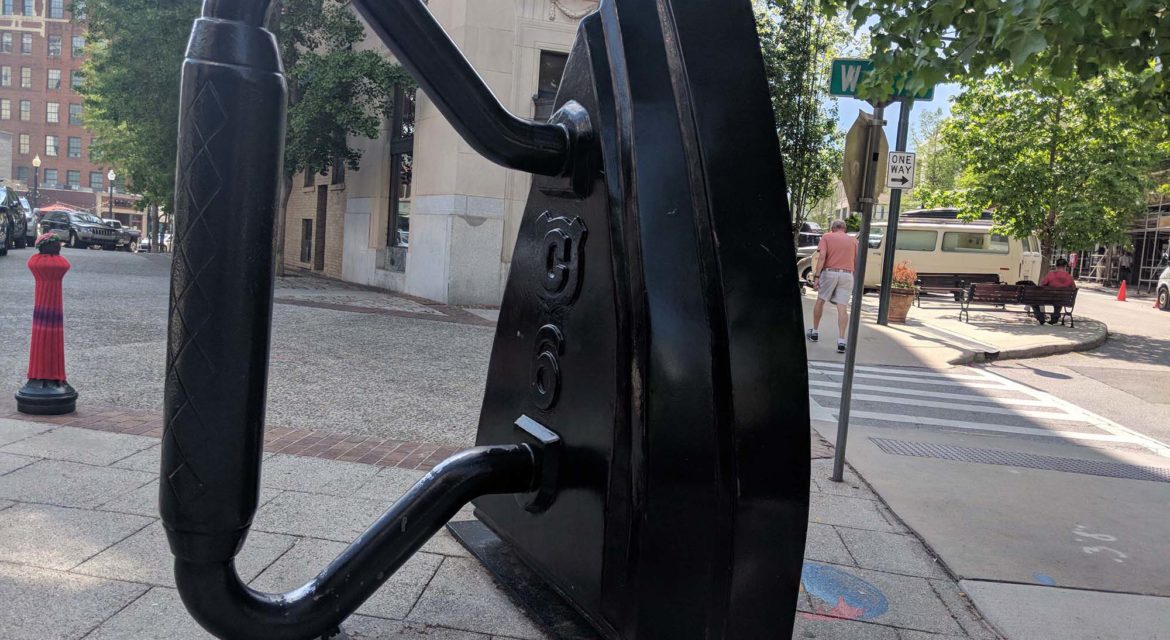 The Asheville Urban Trail is a walking tour of downtown Asheville, North Carolina, but it’s one unlike any other walking tour in the world. The self-guided walking tour loops 1.7 miles along a course marked by 30 stations, each with pieces of art and/or bronze plaques that describe the station and illustrate the history of the city that is nested in the mountains of North Carolina.
The Asheville Urban Trail is a walking tour of downtown Asheville, North Carolina, but it’s one unlike any other walking tour in the world. The self-guided walking tour loops 1.7 miles along a course marked by 30 stations, each with pieces of art and/or bronze plaques that describe the station and illustrate the history of the city that is nested in the mountains of North Carolina.
Referred to by some as Asheville’s “museum without walls,” George Vanderbilt, E.W. Grove, Thomas Wolfe, F. Scott Fitzgerald, Douglas Ellington and O. Henry are just a few of the notable people that have pieces representing them or their work along the walking path. The Urban Trail is an incredible example of what it means to both showcase history in a unique way and create a legacy that visitors in the present and future will seek to experience.

Helping Revitalize Downtown Asheville
The Urban Trail was begun in 1989 by a small group of citizens interested in helping revitalize downtown Asheville. It was designed by volunteers and built with donations from individuals, groups and organizations that wished to leave a lasting legacy for their community. Mostly local artists helped to create the sculptures and other art works that are found at each station.
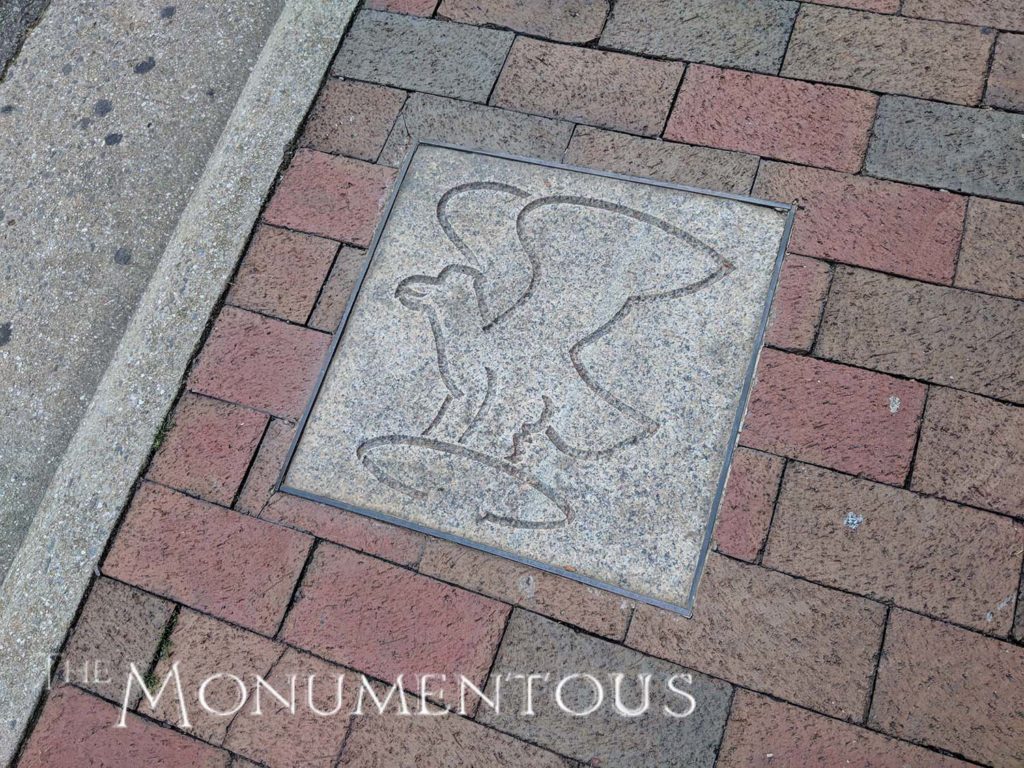
The trail took ten years to complete, with its final station nested into place in May, 2002. Asheville’s history is divided into five distinct eras across the trail, each of which has a symbol associated with it. These symbols are carved into pink granite blocks placed in the sidewalk along the way for visitors to follow. In chronological order, The Frontier Period, The Gilded Age, The Times of Thomas Wolfe, The Era of Civic Pride and The Age of Diversity are represented across the five eras and 30 stations.
The Urban Trail begins in the heart of the city, at the Walk Into History station. Dedicated to George Willis Pack and falling into The Gilded Age period, the plaque at this station is just a hint at the far more significant pieces showcased for stations that honor the evolution of transportation in Asheville, highlight Flat Iron Architecture and show off bronze versions of Thomas Wolfe’s shoes.
This plethora of sights and experiences is just part of what makes the Urban Trail such a unique monument.

The Art and Attractions of the Urban Trail
Experienced in its entirety, the Urban Trail takes about two hours to complete. Maps identify each of the 30 stations by number, although it can be difficult to spot certain attractions since they range from small sculptures to North America’s largest self-supporting elliptical dome. While some have expressed frustration relating to the difficulty associated with spotting the attraction at each station, interactive maps and downloadable scavenger hunts can ease and enhance the experience in whatever way visitors choose.
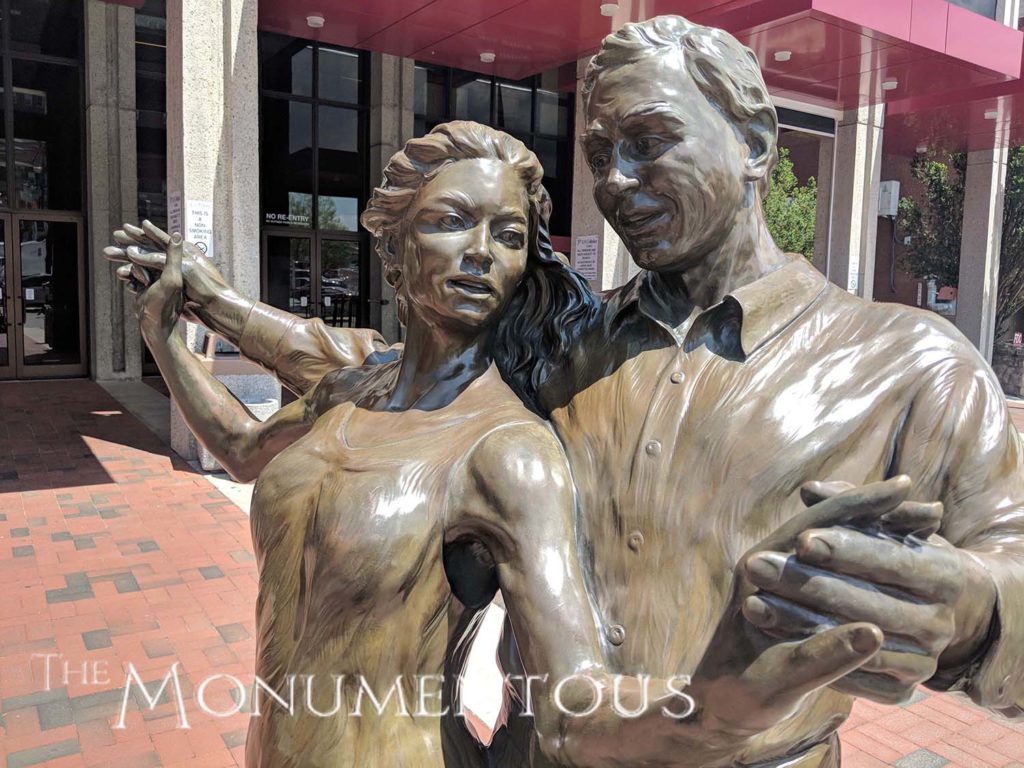
The trail can be started at any of the stations, but starting at Asheville’s Pack Square allows participants to run through the stations in numerical order. The order of the stations originates from the location of this first station, and does not line up with their chronological order. Stations dedicated to a time when produce markets and livery stables lined the streets as well as the legacy of design of the city itself represent The Gilded Age and appear in the middle of the trail. However, visitors can visit these stations in whatever order they wish, and the variety of art and attractions that are along the Urban Trail is far more important than how they’re arranged.
You can do everything from “see through” the eyes of Thomas Wolfe to appreciate Douglas Ellington’s original working concept of two art deco buildings of government to gaze up to a Victorian frieze. All of that is in addition to more traditional pieces depicting a crossroads of people and animals, a bench with a bower of medicinal herbs that honors Asheville resident Elizabeth Blackwell and five bronze figures celebrating the rhythms of Appalachian music. The ability to visit these stations in whichever way visitors choose and stay as long as they’d like at each encourages them to experience the Trail in their own way, and at their own pace.
The experiences that the Urban Trail opens up has pulled in visitors from all over, and that development has had a major impact on the culture and economics of Asheville in countless ways.

A Tremendous Asset for Asheville
Teachers and students are encouraged to download the teacher’s guide or visit the teacher resources page to learn more about the history of Asheville. These resources are providing both with a much better sense of what’s represented at each station to give students a whole new appreciation of the history that is on display. Visitors of any age can get an even better sense of this history and how it has impacted the culture of the city via the Urban Trail “Walk into History” video or an audio tour of each station.
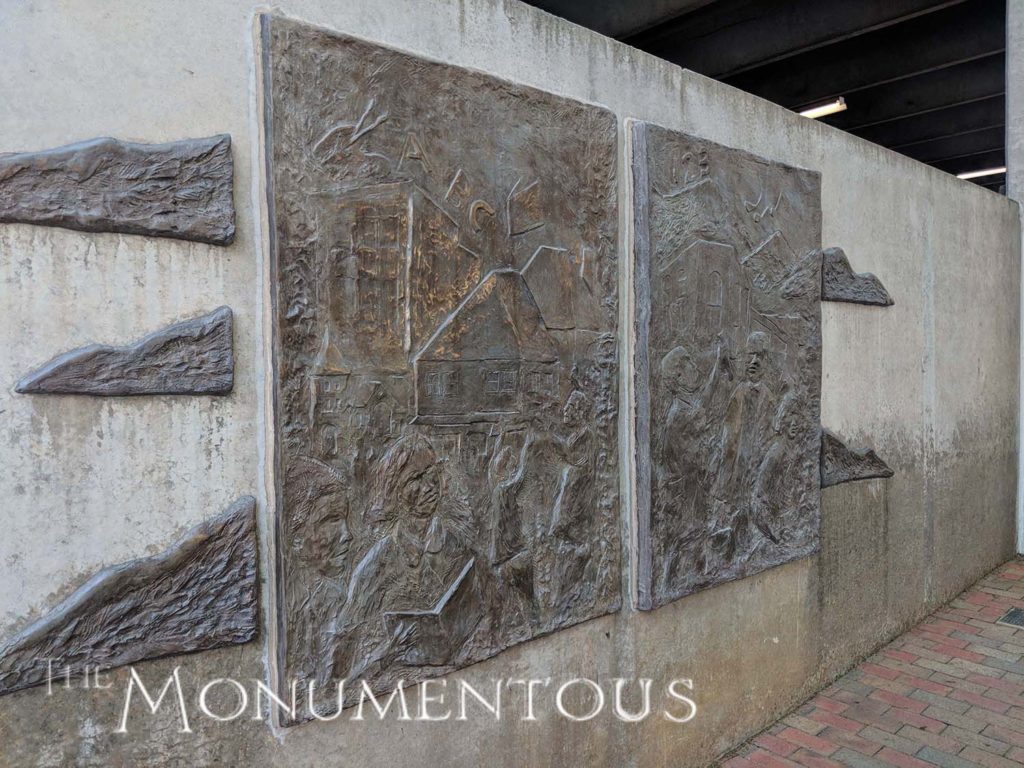
The Urban Trail has been referred to as a tremendous asset for Asheville, and that’s evident because the trail encompasses multiple narratives and perspectives. A bronze relief that celebrates the spirit of Asheville’s African-American community as well as a plaque honoring James Vester Miller illustrates the importance of a history that hasn’t always been fully appreciated. Additionally, the Urban Trail has been able to highlight Asheville’s public art collection throughout the downtown area in a way that would be impossible otherwise. These pieces represent everything from the rhythm of the mountains to the nature of Asheville, and further showcase the impact on the culture of the city.
That impact goes beyond the culture on account of the Urban Trail being literally woven into the city itself. Since it passes by numerous restaurants, bars and shops, anyone walking the trail can veer off their journey at any point for lunch, shopping and further exploring, regardless of when or where they started. The variety of shops and stores that are along and just off the trail are being directly and indirectly supported by the 200,000 Asheville visitors coming to the area each year, many of whom walk along at least part of the Urban Trail.
The impact of the Urban Trail on the culture and economy of the present is considerable, but it’s the legacy that it has created for the future that might prove to be even more monumentous.

Moving Beyond History and Legacy
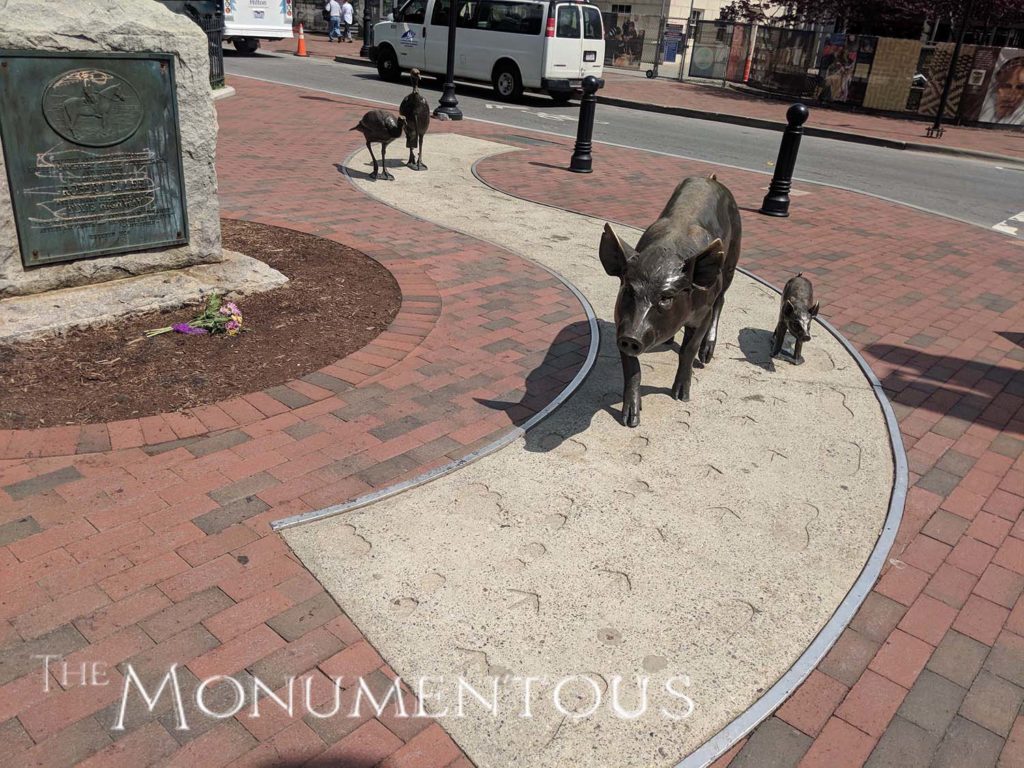
Numerous monuments are designed to celebrate a legacy or highlight a piece of history, but few have been able to move beyond mere history and simple legacy like the Urban Trail. By incorporating a variety of art and attractions to engage residents and visitors, the Urban Trail allows all of them to form and create their own unique experiences that resonate in an especially important way.
These experiences mean something for the people visiting the Urban Trail today, and they’ll mean something different but just as relevant for the people visiting it in the future. It’s proof of how a simple desire to highlight the unique architecture, people and events of a place can become so powerful and influential.

